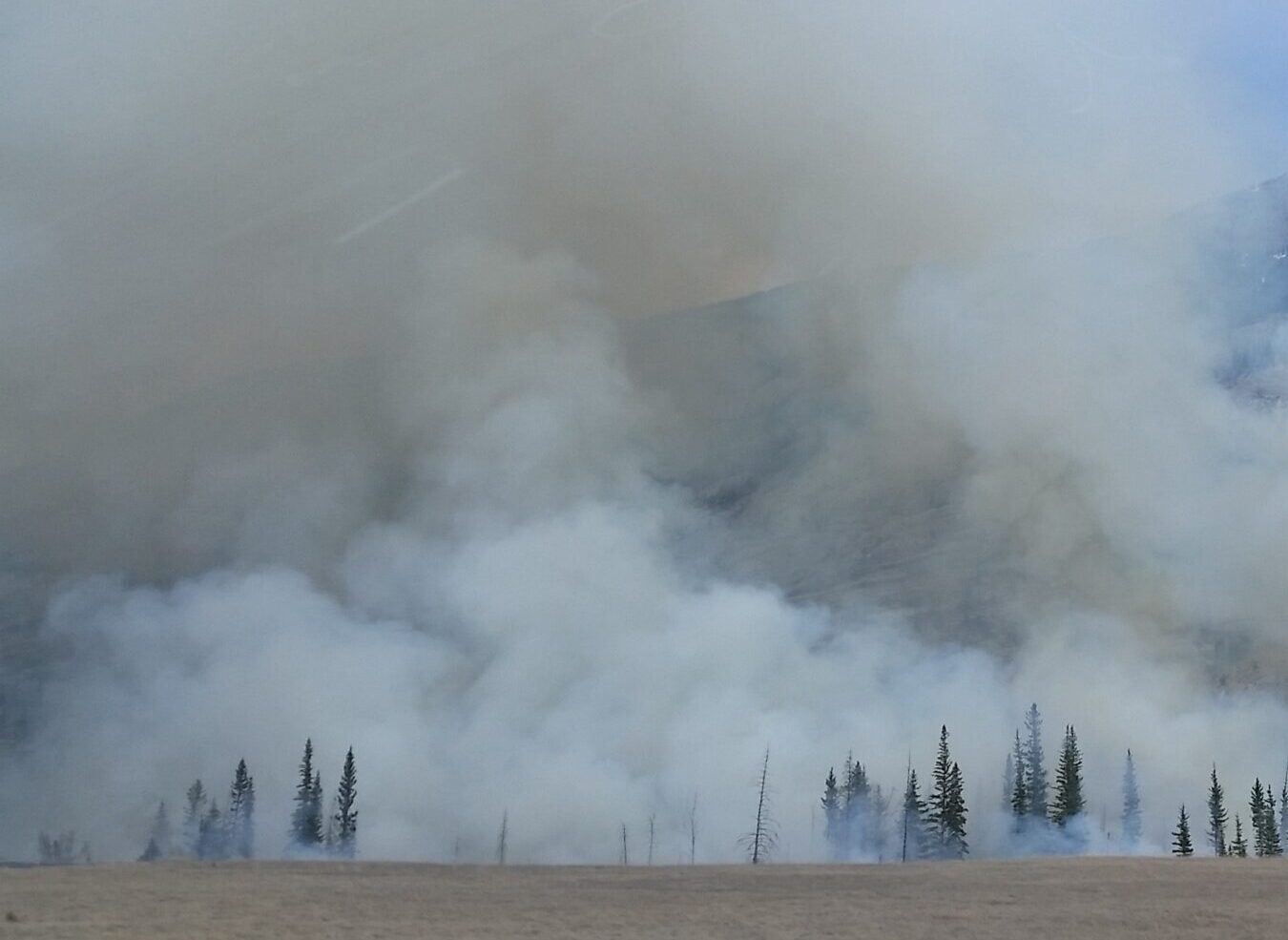EDMONTON, AB – Alberta continues to face a significant wildfire threat, with provincial officials providing a detailed update on the ongoing situation. Derrick Forsythe, the Information Officer with Alberta Wildfire, and Joe Zatylny, Deputy Managing Director with the Alberta Emergency Management Agency, addressed the media, outlining the current status of the wildfires and the efforts being made to manage them.
Derrick Forsythe reported that there are currently 118 wildfires burning in the forest protection area of Alberta. Of these, 19 are under control, 46 are being held, and 53 are considered out of control. The wildfire danger remains particularly high in the southern parts of the province.
Forsythe highlighted two major fires in the Rocky Mountain House area: RWF-064 and RWF-062. RWF-064, located 25 kilometers south of Nordegg, has expanded to over 6,900 hectares. RWF-062, 20 kilometers west of Nordegg and 9 kilometers northwest of the Bighorn First Nation, has grown to more than 4,900 hectares. Both fires have exhibited extreme wildfire behavior and have continued to grow since the previous day.
In addition to these fires, a new wildfire, CWF-065, started overnight in the Calgary Forest Area near Berganthal Lake in Peter Lougheed Provincial Park. This fire is currently out of control and covers 1.2 hectares. As a result, several trails, parking lots, and drainage systems in the area have been closed to facilitate firefighting efforts.
The ongoing wildfires have affected various parks, campgrounds, and roads. Forsythe advised residents and visitors to check AlbertaParks.ca and Alberta 511 for the latest information on closures. With the fire danger remaining extreme in the southern regions, a fire ban is in place south of the Pembina River, prohibiting wood campfires.
Despite the high fire danger, there is some positive news. The Little Red River Cree Nation has announced that residents can return to the communities of Chateh, Fox Lake, and Garden River starting August 5th. Forsythe expressed relief that progress on containing the wildfires has allowed these communities to return home.
Joe Zatylny provided updates on the emergency response efforts. The Provincial Emergency Coordination Centre remains at operational level four to coordinate the provincial government’s response. While no new emergency alerts have been issued recently, residents of Chippewa Lake and the Municipal District of Opportunity have returned home.
Zatylny emphasized that while reentry for some communities is beginning, the wildfire threat is not over. Evacuation alerts and orders can still be issued at any time, and residents should remain prepared to leave on short notice. Information on reentry procedures and safety precautions is available at Alberta.ca/emergency.
For Jasper residents, bus tours of the town will begin tomorrow for those who have lost or had damage to their homes. These tours aim to help residents prepare for reentry, with mental health and support services available during and after the tours. Zatylny stressed that the tours and eventual reentry will proceed only as conditions allow, based on the advice of the incident command team in Jasper.
During the Q&A session, journalists raised questions about the fire situation and the measures being taken. Joe Zatylny addressed concerns about the urgency of the Jasper bus tours, explaining that feedback from residents and collaboration with local authorities prompted the expedited scheduling. Mental health supports on the buses will include specialists to assist residents emotionally and provide information.
As the province continues to navigate this challenging wildfire season, cooperation and vigilance from all Albertans are crucial in mitigating the impact of these natural disasters.

